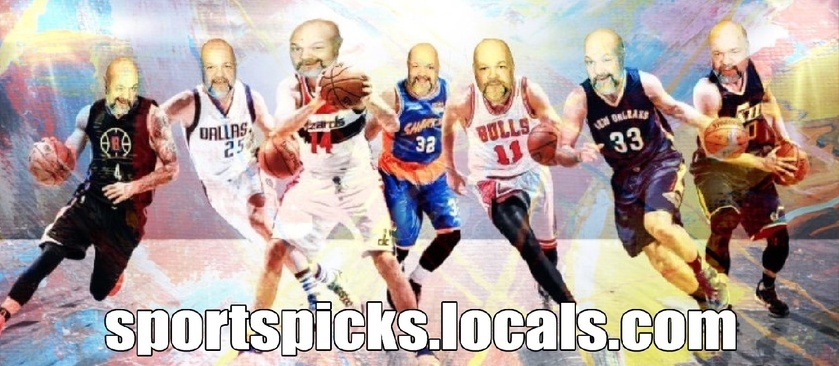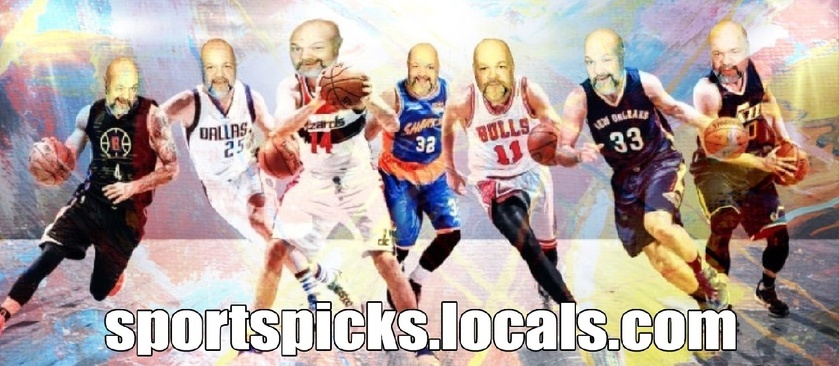2% max recommended unless otherwise noted. 1% max recommended for soccer.
Optimising Value on Spreads and Totals
Tonight's post is motivated by the ongoing questions about the good to ranges in the official picks. Not only are there questions about interpreting the good to ranges on moneyline, but there are questions about good to ranges on spreads that even some of the regulars here have. In order to estimate the edge, we must use probability theory to determine the expectation value of a bet given certain odds and then compare said edge with the other options available. For moneyline bets, this simply ends up being odds in decimal format divided by the good to odds (the reciprocal of the latter term is the implied probability of given odds, that is to say, the probability the underlying outcome would require to break even over a large number of iterations), then minus one. For spreads and totals on the other hand, this is more complicated because the lines and totals themselves move. I'll delve into why that is and how we can get the best value for money with our own estimates. The conclusions may surprise you.
At the outset, when we see a pick listed as TEAM A +100 Team B (good to -120), we can convert these into decimal odds: TEAM A 2.0 Team B (good to 1.83). If our estimate of the good to range is accurate, then we can evaluate the expectation value as ~0.09. When we see a pick listed as a spread, we might see TEAM A +4.5 Team B (good to +3.5). We don't really know anything about how these are priced other than the +3.5 should offer a bigger return than the +4.5. To understand what odds these entail in practice, we go back to what the spread is: it's an estimate of the median outcome of a quantitative market such that your expectation value is the same no matter whether you take one side or the other. Since the underlying probabilities are constantly shifting, so too does the median line. When the absolute values of either side of the spread become bigger than those of the adjacent spread lines, that's generally when the bookmakers move the line.
Let's suppose team A opens at +4.5 with odds of -110 each side for implied probabilities of ~52.4% each way for a ~4.8% overround. These probabilities can be normalised if desired, but for practical purposes they are the break even probabilities for each outcome. Let's say money comes in on team B (it doesn't matter whether it's public money or sharp action, let's suppose that it is sufficient to shift the odds). We might now have team A +4.5 at +100 and team B -4.5 at -120. Team A is now implied at 50% while team B is implied at ~54.5%. Next more money comes in on team B and team A +4.5 becomes -135 and team B -4.5 becomes +110 (57.4% and 47.6%). At this point, the bookmaker might estimate that team A +5 should be -115 and team B should be -105 (53.5% and 51.2%). The absolute values of these are smaller (and thus closer to 100) than the +4.5 and so the bookmaker moves the line to +4.
Thus if you want to get more precise with interpreting the good to lines on the official picks, you may want to take the good to line and consider -120 as its edge price. If it is a half fractional spread, you can use this good to line as the cumulative probability that team A keep the score to within a margin sufficient to cover the spread. If you want to compare value with an alt spread (let's say between the +3.5 and the +4.5), you'll want to take the break even probability from the good to odds on the +3.5 and add your own estimate of team A losing by exactly 4. These two probabilities added together represent the probability of covering the +4.5 spread and thus you can use this to estimate not only a good to price on the +4.5, you can also use it to compare expectation values and assess which line is better value. If you are comparing an integer spread to a half integer spread, this is slightly more complicated as you have to account for the push. The expectation value in this case is decimal odds times underlying probability of outright cover of spread minus the probability of an outright miss. In this case you can estimate the probability of an outright miss as one minus the probability of an outright hit minus the probability of a push.
This may seem needlessly complicated but it is useful. If you are bidding for spread entries on Polymarket and Kalshi, you won't be given one dynamically changing line, you'll instead have several lines to choose from generally. Estimating probabilities and expectation values is crucial for comparing potential entries and combined with reading of price action you can get the best entries possible. This is very important because as I have laid out in previous posts, the price of spread hooks around key numbers is already taken into account by the bookmakers. The question should not be has that -2.5 crossed the boundary into -3.5, the question should be is that -3.5 priced better or worse than that -2.5. If you eyeball the order books on Polymarket and Kalshi you can see that the -3.5 is very noticeably cheaper than the -2.5. That's why I'm not afraid to take the spread over a key number if its price implies a higher expected value. Often times people are reluctant to buy the -3.5 but all the more willing to buy the +3.5 so you can normally get filled at those levels.
This links in to my previous post about alt lines and teasers as the prevailing wisdom is to take advantage of key numbers, yet anecdotally, both Will and Crickett have had success going against said prevailing wisdom. My reading of it is that the general betting public still has a general fear of these key numbers and that fear is an opportunity under certain circumstances for those who are not afraid to take an ugly looking spread. I took the 49ers at +6.5 against the Rams a few weeks when they looked banged up and ropey as hell. A lot of people were scared off by that +6.5 but I got it down at 40c, so when it cashed it made up for some misses in other spots. Despite spreads clustering around the median outcome, it's not about your hit rate with them, it's about hit rate with respect to return.
This ties in also with the observation in a previous post that the response of the spread line to a change in moneyline is non-linear, so the difference between a +6.5 and a +7.5 is far bigger than the difference between a +1.5 and a +2.5. Bear this in mind if you are hesitant about taking some of the official picks that cover spreads and totals as with a bit of confidence you can find a little extra value just short of the hook around a key number.
Battled to even this week; profits still positive on the season.
NCAAF
YTD ROI 17.7%
APR 124%

